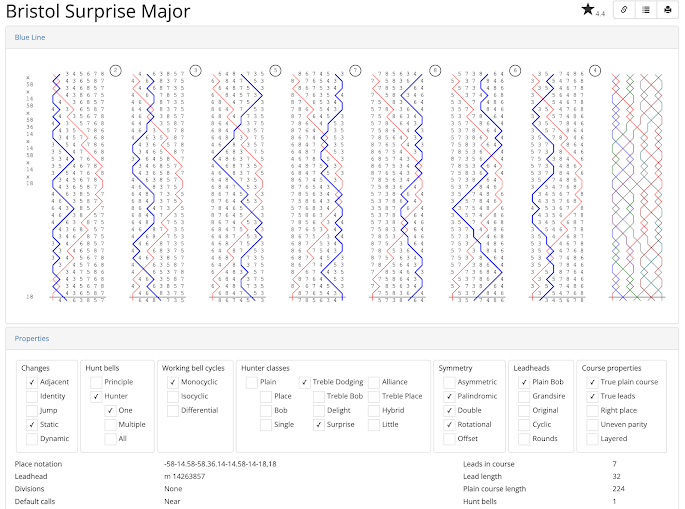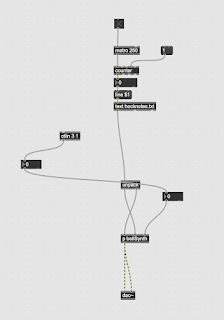Blog1: General Introduction (project proposal and blog outline)
Blog1: General Introduction (project proposal and blog outline)
Tuoye Ma
Title: Music Technology and Bellringing
Aims:
The project's goal is to make a system using Max that lets people play bell compositions with a MIDI controller. We're creating a special bell sound maker that you can customise, turning bell music into notes that a computer can understand, and letting you change how it sounds while you play. This project is all about making a new kind of music system that hasn't been done much before.
Objectives (with choices and decisions):
1:Literature Review:
The stuff people have written about bell ringing and MIDI (that's the technology used for controlling electronic instruments) helps us understand these topics better.
Some talk about why bell ringing is important in English culture and how it's done, which helps us appreciate its history and traditions.
A most public of musical performances: the English art of change-ringing
The Art and Science of Change Ringing
There are also papers that explain how to make bells sound using computers, which is handy if you want to make music with bells but don't have real ones.
Physical modelling techniques for the dynamical characterisation and sound synthesis of historical bells
The Csound book: perspectives in software synthesis, sound design, signal processing, and programming
For MIDI, there are guides that explain how it works and how musicians can use it to play electronic instruments.
MIDI: a comprehensive introduction.
An interactive MIDI accompanist.
Some papers even talk about making computer programs that can play music along with you, which is like having a virtual bandmate.And there are studies on making MIDI interfaces easy to use, so musicians can focus on making music instead of struggling with technology.
Overall, these papers teach us a lot about bell ringing, making bell sounds with computers, and using MIDI to make music. And all the references would be so useful that they would be introduced in detail in later blog post.
2: Develop a Customisable Bell Synthesiser(Create Your Own Bell Synthesiser):
We're building a special bell sound maker using Max. With it, you can craft your own bell sounds that sound just like the real thing. We'll use fancy techniques like FM synthesis to make the bells sound lifelike. Plus, you'll be able to adjust settings like volume, duration, and tone slightly to get the perfect bell sound. However, the real challenge is figuring out how to incorporate the unique techniques used in bell ringing.
3: Convert Bell Compositions to MIDI(Turn Bell Music into Computer Notes):
We're developing a way to turn bell music into notes that your computer can understand. Then, we'll link these notes to our bell maker in Max. We'll also experiment with using different controllers to change settings in real-time, so you have total control over your bell compositions.
4: Real-time Parameter Control:
We'll make a super easy way for you to adjust how your bells sound by using a special controller. Each button or knob you press will produce a different bell sound. And we'll add cool effects like reverberation/delay(echoes) and filters to make your bell compositions even more dynamic and exciting.
5: Evaluation:
Once everything's set up, we'll put our Max-based system to the test. We'll try it out with a variety of bell compositions and different MIDI controllers. Then, we'll ask for feedback from users to make sure it's easy to use and sounds great.
Blog outline (6 blogs):
General Introduction (project proposal and blog outline): April 17th, 2024
Change ringing (bell ringing): April 24th, 2024
Bell synthesiser:
MIDI control: May 1st, 2024
MIDI interface:
Project plan and timeline:
All of them will be finished in May.
Example:
https://complib.org/method/19048
This page demonstrates illustrates the connection between the ‘blue line’, and the path of each bell as you work through consecutive rows. The grid is formed by overlaying the lines. It will help my project a lot.
Here is an another useful link about change ringing, which also explains the picture above:
https://www.youtube.com/watch?v=h5BNOOahWX0
Here is a link of the audio file, what change ringing sounds like:
https://freesound.org/people/jlm5040/sounds/431844/
For more detailed interpretation, I will write it in the next blog.
Novelty:
The project is all about blending the traditional art of bell ringing with modern music technology. We're using MIDI controllers and digital synthesis to bring this old art into the world of digital music. To make it happen, we're using Max, a visual programming language famous for making all sorts of cool multimedia stuff. With Max, we're creating a bell synthesiser that you can customise to make your own unique bell sounds. We're diving deep into advanced techniques like FM synthesis to make sure the bells sound as real as possible.
But here's the really interesting part: we're not just stopping at making bells sound good. We're also integrating the principles of change ringing into MIDI-controlled synthesis. This means we're mixing traditional bell ringing concepts with the power of digital music control. It's not just an academic exercise; it's also super practical for musicians who want to explore new ways of making music.
One of the fanciest things we're doing is giving you real-time control over the bells using a MIDI controller. This means you can change how the bells sound on the fly, adding a whole new layer of expression to your music. It's like painting with sound!
By blending the art of bell ringing with digital synthesis, we're not just creating music; we're reshaping traditional forms and bringing fresh ideas to the field of music technology.


Comments
Post a Comment